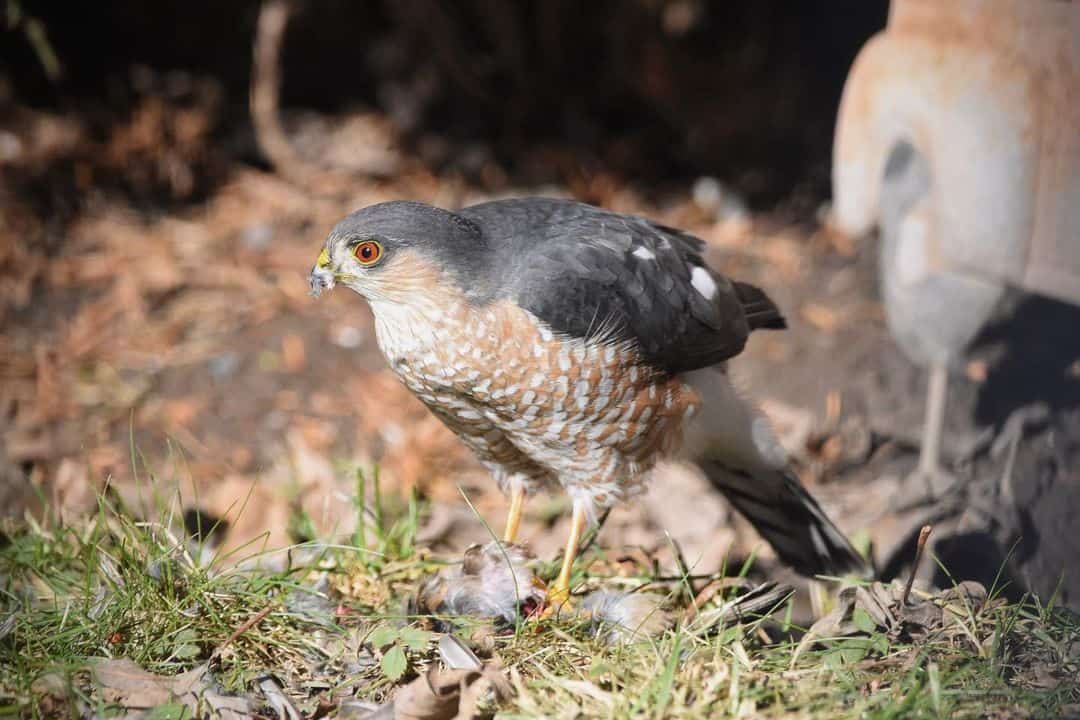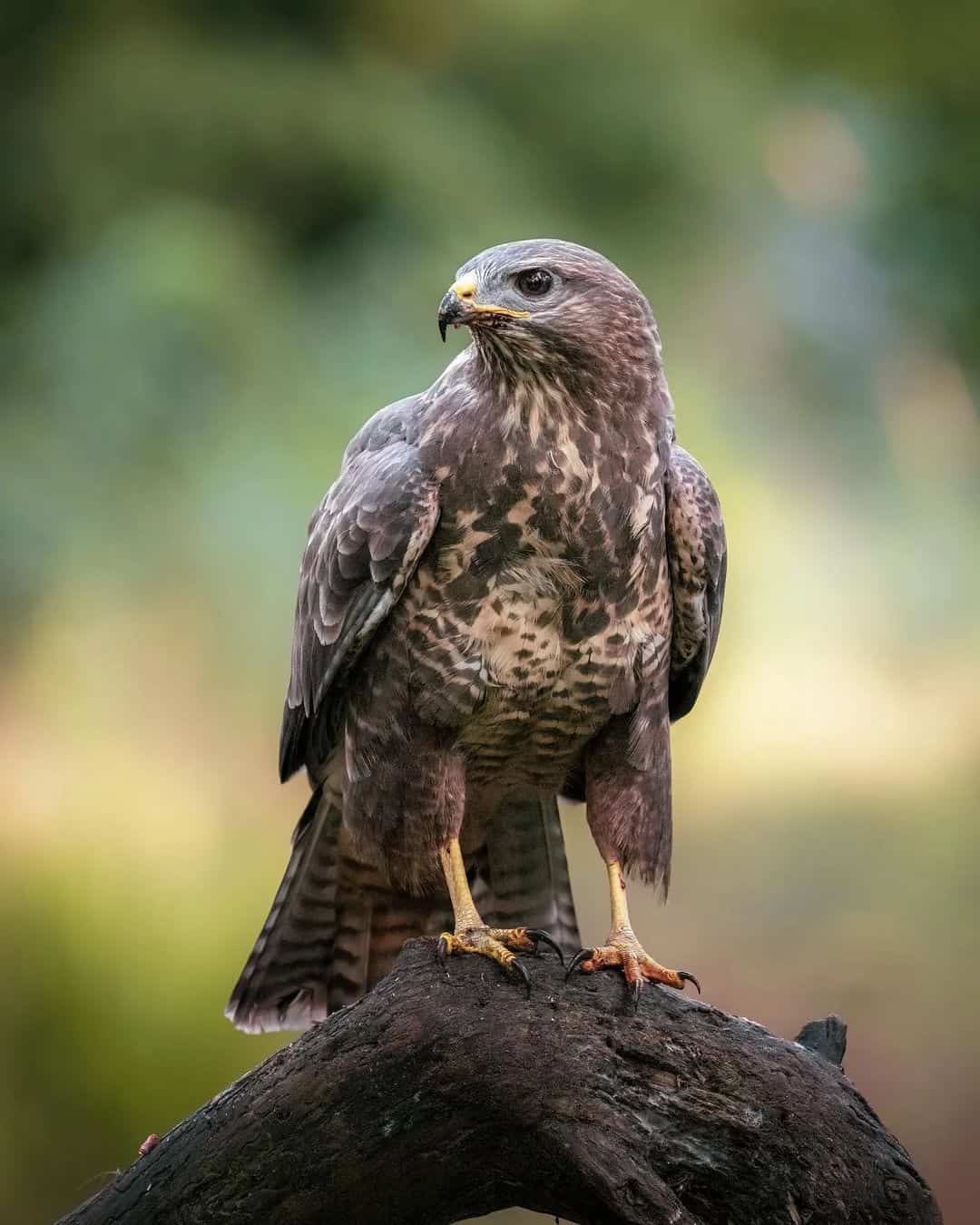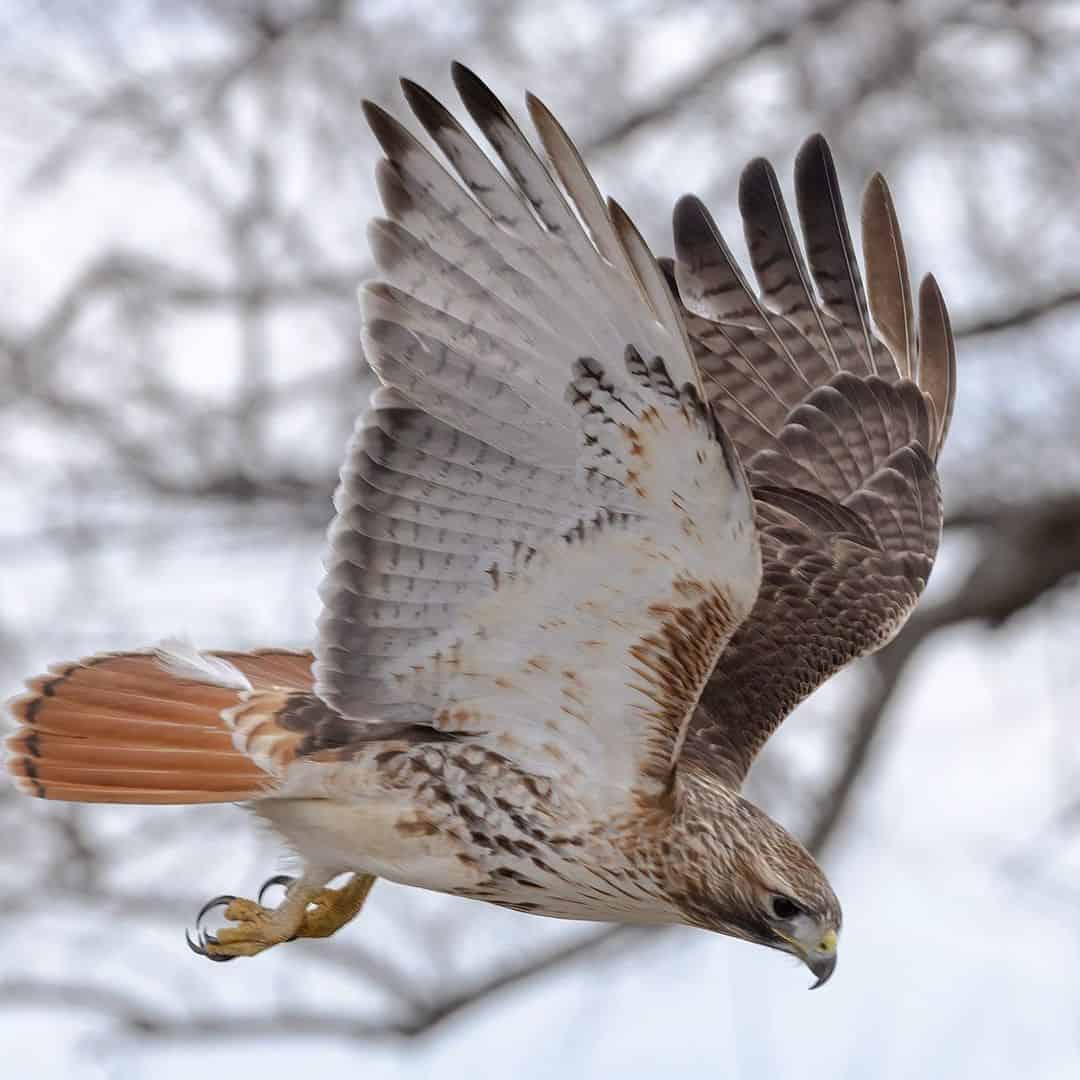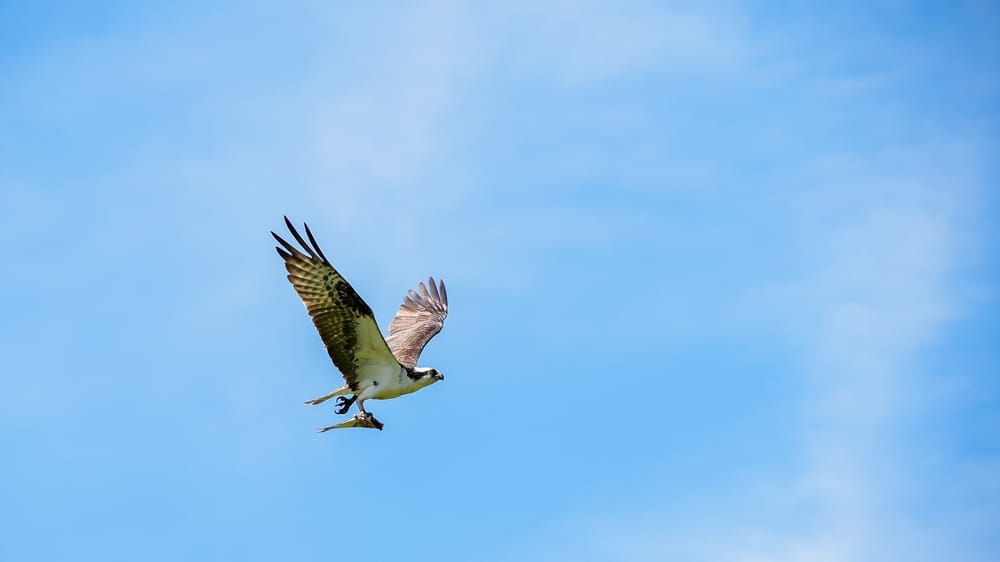Are hawks ‘scouting’ your property? Since these large raptors can easily swoop in and take small animals, you need to be mindful.
But before you take some precautionary measures, it would be good to know: how much weight can a hawk carry?
Let’s answer this question – and more – below.
How Much Weight Can a Hawk Pick Up?
A hawk can carry something that weighs its own body weight – or less. As such, several hawk species can pick up animals weighing anywhere from 2 to 4 pounds.
Here are the weights of different species – and an estimate of how much they can carry:
- Sharp-shinned hawk: less than 1 pound
- Broad-winged hawk: 1 pound
- Short-tailed hawk: 1.1 pounds
- Cooper’s hawk: 1.2 pounds
- Red-shouldered hawk: 1.3 pounds
- Grey goshawk: 1.5 pounds
- Common black hawk: 1.8 pounds
- Zone-tailed hawk: 2 pounds
- Black sparrowhawk: 2.2 pounds
- Red-tailed hawk: 3 pounds
- Northern goshawk: 3 pounds
- Ferruginous hawk: 3.3 pounds

shappaswild
Can a Hawk Carry Small Pets Away?
It’s possible but highly unlikely.
According to the Cornell Lab of Ornithology, larger red-tailed hawks can carry as much as 5 pounds. Simply put, it may be able to take young pets away.
In fact, it was reported that a hawk was able to take a 7-pound dog in New Jersey in 2018.
Although this may seem scary, the fact of the matter is most pets are bigger than hawks.
Chihuahuas, which are classified as the smallest dog, can weigh up to 6.6 pounds. The Singapura cat, on the other hand, maybe the smallest cat – but it can weigh up to 6 pounds.
Furthermore, the hawk prefers to eat other animals – the likes of which I’ll discuss below. Unless they run out of food, the hawk will focus on their usual prey – instead of your domestic pets.
Can a Hawk Carry a Chicken?
Some hawks – specifically Cooper’s hawk – are known to prey on chicken. And while this holds true, it’s not always the case. After all, chickens can weigh anywhere from 3 to 6 pounds.
That being said, hawks may pounce on baby/small chickens, especially if they get separated from the group.
All is fair game for a hungry hawk!
How Do Hawks Attack?
A hawk will start the process by soaring in the sky. They will ride on thermals or circle the prey to adequately see them.
In some cases, the hawk may try to hover over a certain area.
The hawk may continue circling/hovering in the sky in an attempt to ‘stress’ the animal out.
And, in most cases, the animal will try to escape – and that’s when the hawk will move in for the kill.
The hawk will then use its sharp talons to latch on its prey.
Hawks have a total of four talons – with one facing backward and another three facing forward. They are as sharp as a dagger, which is why these birds can exact deadly puncture wounds on their prey.
What Do Hawks Like to Eat?
Hawks will hunt small animals that they plan to eat. That includes rodents, rabbits, reptiles, small birds, or snakes.
So while your small dog or cat may be safe, you need to be cautious if you have any of these as pets.
1. Rodents
Popular rodent pets include guinea pigs, gerbils, hamsters, voles, and fancy mice. And while these are often locked up in cages, they may be captured by a hawk should they run free.
Indeed, these small mammals make easy targets because of their slow movements and petite size:
- Gerbil: 0.125 pound
- Voles: up to 0.143 pound
- Hamster: up to 0.33 pound
- Fancy mice: up to 0.28 pound
- Guinea pig: 2-2.6 pounds
2. Rabbits
The rabbit is another one of the hawk’s favorite prey. Raptors often have an easy time capturing them because of their small sizes and relatively slow movements.
Here are some examples of the hawk’s favorite rabbits:
- Brush rabbit: 1.5 pounds
- San Jose brush rabbit: 1.6 pounds
- New England cottontail: 1.8 pounds
- Desert cottontail: 1.9 pounds
- Tres Marias cottontail: 2.1 pounds
- European rabbit: 2.2 pounds

macroturk
3. Lizards
Hawks are fond of eating reptiles such as lizards – at least the smaller ones. They are easy to catch and slow to move, as is the case with most preys in this list.
Hawks are known to feed on the following lizards:
- Gecko: 0.11-0.14 pound
- Chameleon: 0.4 pound
- Skink: up to 1.125 pounds
- Glass lizard: 1.3 pounds
4. Small Birds
Hawks will prey on small birds, such as the dove (0.26 pound), quail (0.21 pound), and woodpecker (up to 0.01 pound). After all, they’re slower than the hawks. For one, red-tailed hawks can fly an impressive 120 mph!
5. Snakes
Snakes are hawk predators, though some hawks can prey on them as well. Here are some snakes that are part of the hawk’s diet:
- Garter snake: 0.33 pound
- Copperheads: up to 0.75 pound
- Black rat snake: 2.5 pounds
- Rattlesnake: 2.5 pounds
As some snakes are particularly quick, hawks will focus more on serpents that don’t move as fast.
6. Frogs
Larger red-tailed hawks are known to feast on the Pacific tree/chorus frog, which weighs a measly 0.25 ounce.
In most cases, hawks eat frogs to protect their young – especially if they live in the wetlands. Frogs, after all, may come after their eggs.
What Birds Will Attack Your Pets?
Although there are reports of hawks that attack pets, it’s a rare occurrence. More often than not, the great-horned owl is often to blame for such events.
For one, this creature can carry as much as 1.4 times its own weight. As such, it may be able to attack a pet weighing as much as 9 pounds.
Other possible culprits include the bald eagle and the golden eagle. The former can carry as much as 5-6 pounds, while the latter can pick up a whopping 8 pounds.
True enough, these birds of prey are more likely to capture your pet. And to prevent this from happening, you need to follow the tips below.

hushr
How to Keep Your Pets Safe From a Large Hawk – and Other Birds
As mentioned above, hawks and some other birds may be able to carry small pets. But if you own the hawk’s preferred prey – or if you want to be on the safe side of things – then make sure to follow these tips on keeping your animals safe from such predators.
1. Don’t Leave Your Pets Unsupervised
Make sure to keep an eye on your puppy or kitten – especially if it likes to run around in your backyard. If you leave it unsupervised, a hawk – who stalks its prey in daylight hours – may take advantage of the situation.
2. Go For Covered Areas
If you’re planning on taking your pet for a walk, then do so under the safety of tree canopies. They provide a great deal of protection from hawks that may swoop in suddenly.
3. Avoid Birdwatching Locations
Birdwatching is fun, but having birds around will put your pet at risk as well. Hawks and/or golden eagles may be nearby, and they can stalk your pet if you’re not careful.
4. Use a Leash
It is also prudent to put your dog on a leash whenever you roam around. Not only will it prevent your pet from going somewhere unsafe, but you can also hold onto it – should an unlikely hawk attack happen.
5. Participate in a Dog Walking Group
There’s strength in numbers, especially when it comes to deterring hawk attacks. So if you and your dog are with a walking group, the chances of a hawk attack will be less likely.
6. Use a Hawk-Proof Vest
If you want to keep your pet 100% safe, dress it in a hawk-proof vest whenever you go out. It features spike and other protective armor, thus keeping your dog safe from attacks and whatnot.
7. Avoid Bird Feeders
It’s good to have bird feeders, but they will attract hawks and bald eagles to your property. While they may be on the lookout for smaller birds at first, they may end up setting their sights on your very small dog.
8. Install a Catio
This covered outdoor fixture, which is made from wire mesh, can help protect your pets from hawks and other birds of prey.
9. Place Shiny Objects Around the Area
Hawks don’t like shiny objects. As such, hanging old CDs – or placing scare tape – should help deter hawks from attacking your pets.
11. Invest in an Owl Statue
Hawks are afraid of owls. As such, placing a fake owl in an open area should prevent the hawks from entering your space.
12. Purchase an Ultrasonic Bird Repellent
This item emits ultrasonic sounds that humans and other animals can’t hear. It will only work on hawks, vultures, and other birds, thus keeping them away from your backyard.
Conclusion
A hawk can carry its own weight – about 2 to 4 pounds, to be exact. However, larger species – such as the red-tailed hawk – may be able to pounce on 7-pound animals.
While hawks may prey on pets, they still prefer their usual meals: rodents, rabbits, lizards, small birds, snakes, and frogs.
Were hawks able to carry bigger animals, based on your experience? Don’t hesitate to share your story below!
